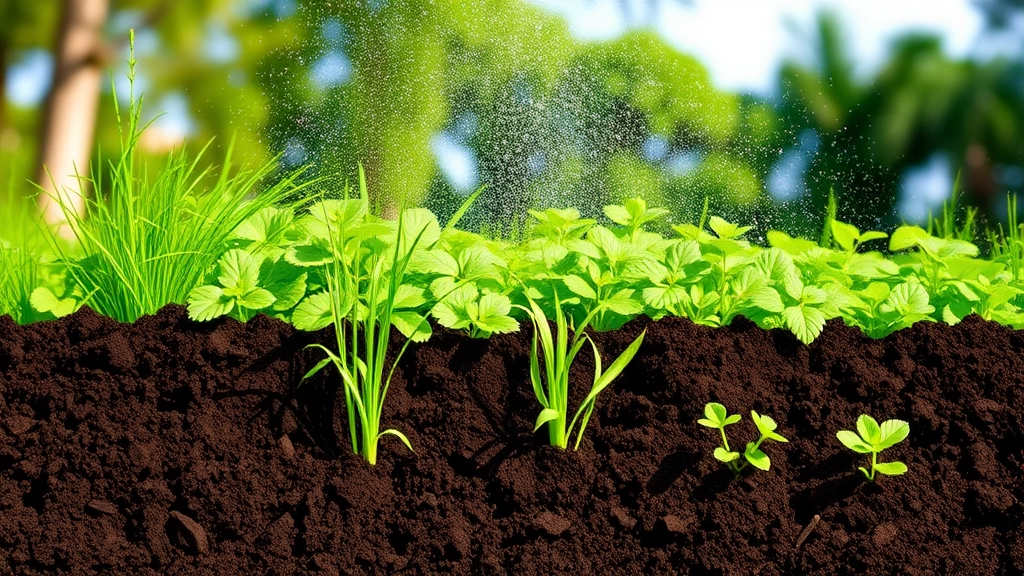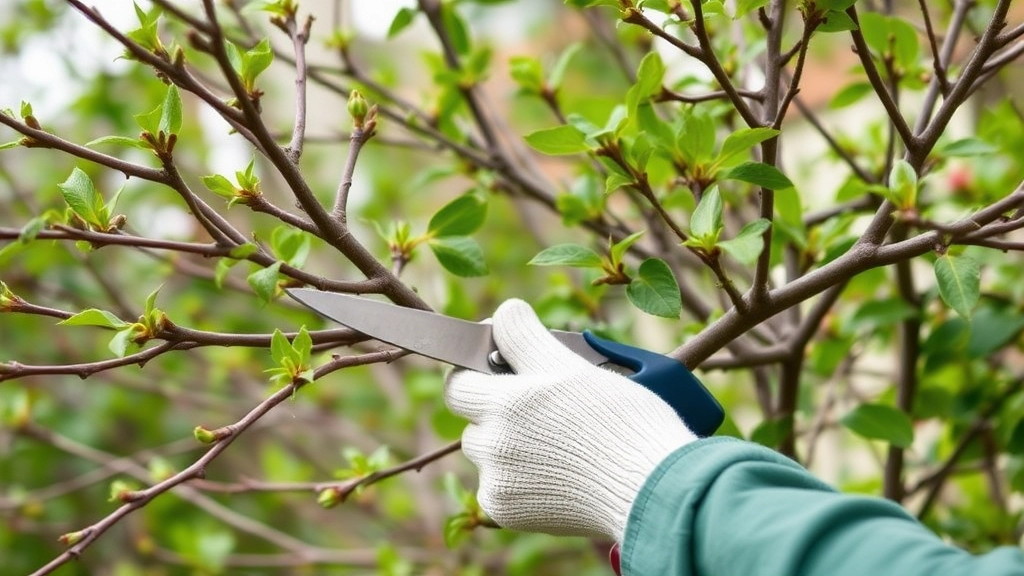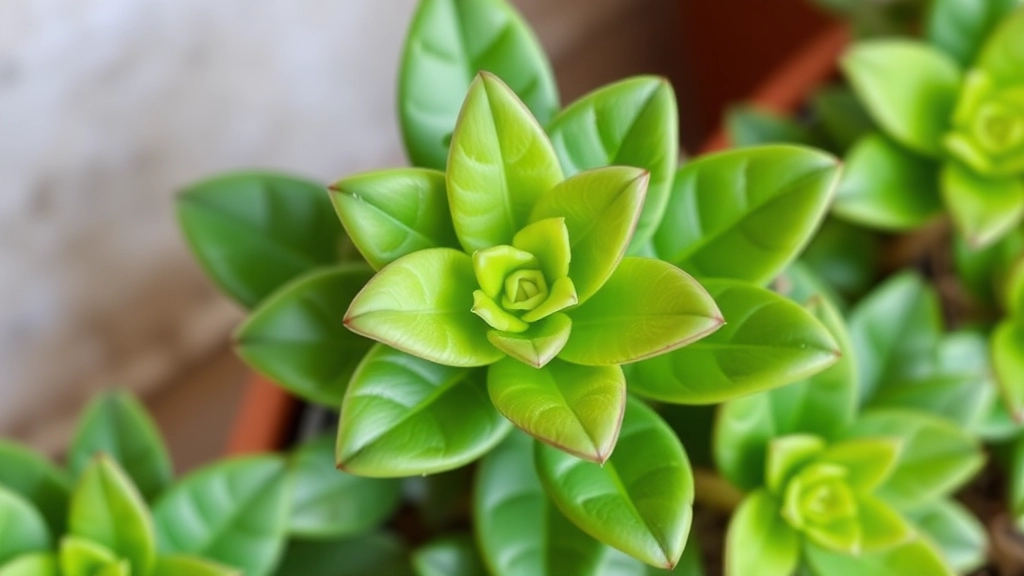Kalanchoe Panamensis Care
Lighting
When it comes to Kalanchoe Panamensis care, getting the lighting right is crucial. This succulent thrives in bright, indirect sunlight. If you’re growing it indoors, place it near a window where it can soak up plenty of light without getting scorched. For outdoor care, a spot with filtered sunlight works best.
Watering
Watering your Kalanchoe Panamensis correctly is another key aspect. These plants prefer a “soak and dry” method. Ensure the soil is well-draining and allow it to dry out completely between waterings. Overwatering can lead to root rot, so it’s better to err on the side of caution.
Additional Tips
Keep reading for more tips on temperature, humidity, and dealing with pests to keep your succulent healthy and vibrant.
Optimal Lighting for Kalanchoe Panamensis
When it comes to nurturing your Kalanchoe Panamensis, lighting is crucial. Many plant enthusiasts often wonder, “How much light does my Kalanchoe really need?” This is a common concern, and understanding the lighting requirements can significantly impact the health and growth of your plant.
Kalanchoe Panamensis thrives in bright, indirect sunlight. Here are some key points to consider:
- Ideal Light Conditions:
- Aim for 6-8 hours of bright, indirect sunlight daily.
- A south or west-facing window is often perfect for optimal growth.
- Signs of Insufficient Light:
- If your plant becomes leggy or its leaves start falling off, it may not be receiving enough light.
- Avoid Direct Sunlight:
- While Kalanchoe enjoys bright light, direct sunlight can scorch its leaves.
- If you notice brown patches, it’s a sign to move it to a shadier spot.
- Artificial Lighting:
- If natural light is limited, consider using grow lights.
- LED or fluorescent grow lights can supplement your plant’s needs effectively.
For more detailed care tips, check out our complete guide on Kalanchoe Tomentosa care and our tips for maximizing the lifespan of your Kalanchoe plant.
II. Watering Guidelines and Soil Needs

When it comes to keeping your Kalanchoe Panamensis happy, watering and soil are key players in the game.
You might be wondering, “How often should I water my Kalanchoe?” or “What type of soil does it really need?”
Let’s break it down.
Watering Guidelines
- Frequency: Water your Kalanchoe when the top inch of soil feels dry. This usually means every 1-2 weeks, but it can vary based on your home’s humidity and temperature.
- Method: Give it a good soak until water drains out of the bottom. Don’t let it sit in water, as this can lead to root rot.
- Signs of Thirst: Look for wrinkled leaves or a droopy appearance – that’s your plant saying, “I need a drink!”
Soil Needs
- Type: A well-draining potting mix is essential. A cactus or succulent mix works wonders. You want to avoid heavy soils that hold too much moisture.
- pH Level: Aim for a slightly acidic to neutral pH (around 6.0 to 7.0). This helps your plant absorb nutrients effectively.
- Additives: Consider adding perlite or sand to improve drainage. This can make a world of difference!
Temperature and Humidity Requirements
When caring for your Kalanchoe Panamensis, understanding its temperature and humidity needs is crucial. You might be wondering, “What temperature does my Kalanchoe need to thrive?” or “Can it tolerate humidity variations?” Let’s explore these essential factors.
Fertilization and Pruning Techniques

As we delve deeper into the care of Kalanchoe Panamensis, it’s essential to consider how fertilization and pruning can significantly impact its growth and overall health.
Fertilization
Proper fertilization is key to keeping your Kalanchoe Panamensis vibrant and thriving. Here are some straightforward guidelines:
- Frequency: Fertilize every 4-6 weeks during the growing season (spring and summer).
- Type of Fertilizer: Use a balanced, water-soluble fertilizer with an NPK ratio of 10-10-10 or similar.
- Dilution: Always dilute the fertilizer to half strength to avoid root burn.
- Application: Apply the fertilizer during watering to ensure even distribution.
Using the right fertilization techniques not only promotes healthy growth but also enhances flowering.
Pruning Techniques
Pruning is another essential aspect of Kalanchoe care, helping to maintain its shape and encourage bushier growth. Here’s how to do it effectively:
- When to Prune: Prune in late winter or early spring before new growth begins.
- What to Remove: Trim off dead or yellowing leaves and spent flowers.
- Technique: Use clean, sharp scissors to make clean cuts, promoting better healing.
- Encouraging Growth: Pinch back the tips of stems to encourage branching.
By incorporating these fertilization and pruning techniques, you can ensure your Kalanchoe Panamensis remains healthy and robust.
Common Pests and How to Prevent Them
As we delve deeper into caring for your Kalanchoe Panamensis, it’s essential to address the potential threats posed by pests.
Identifying Common Pests
Kalanchoe Panamensis can be susceptible to a few common pests, which can hinder its growth and overall health. Here are the main culprits to watch for:
- Mealybugs: These small, white, cotton-like insects often cluster in leaf joints, sucking sap from the plant.
- Spider Mites: Tiny and often invisible to the naked eye, spider mites create fine webs and can cause significant leaf damage.
- Aphids: These small, green or black insects feed on new growth and can stunt the plant’s development.
Prevention Strategies
To keep your Kalanchoe Panamensis thriving, proactive measures can go a long way. Here are some effective strategies:
- Regular Inspection: Check your plants weekly for any signs of pests. Early detection is key.
- Maintain Cleanliness: Keep the plant’s environment clean. Remove fallen leaves and debris that can attract pests.
- Proper Air Circulation: Ensure your plant has good airflow around it. Overcrowded conditions can lead to pest infestations.
- Natural Remedies: Consider using neem oil or insecticidal soap as a preventive measure. These are effective and less harmful to beneficial insects.
- Avoid Overwatering: Excess moisture can create an ideal breeding ground for pests. Water only when necessary.
Treatment Options
If you do spot pests, don’t panic. Here’s how to tackle them:
- Manual Removal: For mealybugs, use a cotton swab dipped in alcohol to remove them directly.
- Insecticidal Soap: This can be sprayed on affected areas to eliminate pests without harming the plant.
- Isolation: If a plant is heavily infested, isolate it from others to prevent the spread.
For more detailed care tips, you might find our Ultimate Guide on Caring for Kalanchoe Succulents helpful. Additionally, if you’re dealing with specific issues like overwatering, our guide on Best Watering Practices for Kalanchoe Tomentosa can provide valuable insights.
Propagation and Repotting Tips for Kalanchoe Panamensis
So, you’re looking to propagate your Kalanchoe Panamensis or maybe it’s time for a repot? You’re in the right place! It can feel a bit daunting, but trust me, it’s easier than it sounds.
Propagation Made Simple
If you want to expand your collection or share with a friend, propagation is a fantastic option. Here’s how to do it:
- Leaf Cuttings:
- Select healthy leaves from your plant.
- Allow them to dry for a day or two to form a callus.
- Place them on well-draining soil and mist lightly.
- Offsets:
- Look for small offsets or pups at the base of your plant.
- Gently separate them from the main plant.
- Replant them in their own pots.
Both methods are super effective and can lead to thriving new plants! For more detailed steps, check out our Kalanchoe Synsepala Propagation Guide.
Repotting Tips
Now, let’s chat about repotting. It’s essential for keeping your Kalanchoe happy and healthy. Here’s what you need to know:
- When to Repot:
- If you notice roots coming out of the drainage holes or the plant seems top-heavy, it’s time.
- Choosing the Right Pot:
- Go for a pot that’s one size larger.
- Ensure it has drainage holes to prevent waterlogging.
- Soil Choice:
- Use a cactus or succulent mix for optimal drainage.
- How to Repot:
- Gently remove the plant from its old pot.
- Loosen any tightly bound roots.
- Place it in the new pot and fill with fresh soil.
Be gentle during this process; your plant will appreciate it! For more tips on keeping your plant healthy, visit our Expert Tips on Caring for Kalanchoe Succulents.
FAQs on Kalanchoe Panamensis Care
How often should I water my Kalanchoe Panamensis?
Water your Kalanchoe Panamensis when the top inch of soil feels dry. This usually means every 1-2 weeks, but it can vary based on your home’s humidity and temperature.
What is the best method for watering Kalanchoe Panamensis?
Give your plant a good soak until water drains out of the bottom. Don’t let it sit in water, as this can lead to root rot.
What type of soil is ideal for Kalanchoe Panamensis?
A well-draining potting mix is essential. A cactus or succulent mix works wonders. Avoid heavy soils that hold too much moisture.
What pH level should the soil be for Kalanchoe Panamensis?
Aim for a slightly acidic to neutral pH, around 6.0 to 7.0, to help your plant absorb nutrients effectively.
Should I add anything to the soil to improve drainage?
Yes, consider adding perlite or sand to improve drainage. This can make a world of difference!
How often should I fertilize my Kalanchoe Panamensis?
Fertilize every 4-6 weeks during the growing season, which is spring and summer.
What type of fertilizer should I use for Kalanchoe Panamensis?
Use a balanced, water-soluble fertilizer with an NPK ratio of 10-10-10 or similar. Always dilute the fertilizer to half strength to avoid root burn.
When is the best time to prune Kalanchoe Panamensis?
Prune in late winter or early spring before new growth begins.
What should I remove during pruning?
Trim off dead or yellowing leaves and spent flowers. Use clean, sharp scissors to make clean cuts, promoting better healing.
How can I encourage bushier growth in my Kalanchoe Panamensis?
Pinch back the tips of stems to encourage branching.
References
-
How to Grow Kalanchoe Succulents
-
Kalanchoe Plant Care: Growing Kalanchoe As A Houseplant
-
Kalanchoe: How to Grow and Care for Kalanchoe
